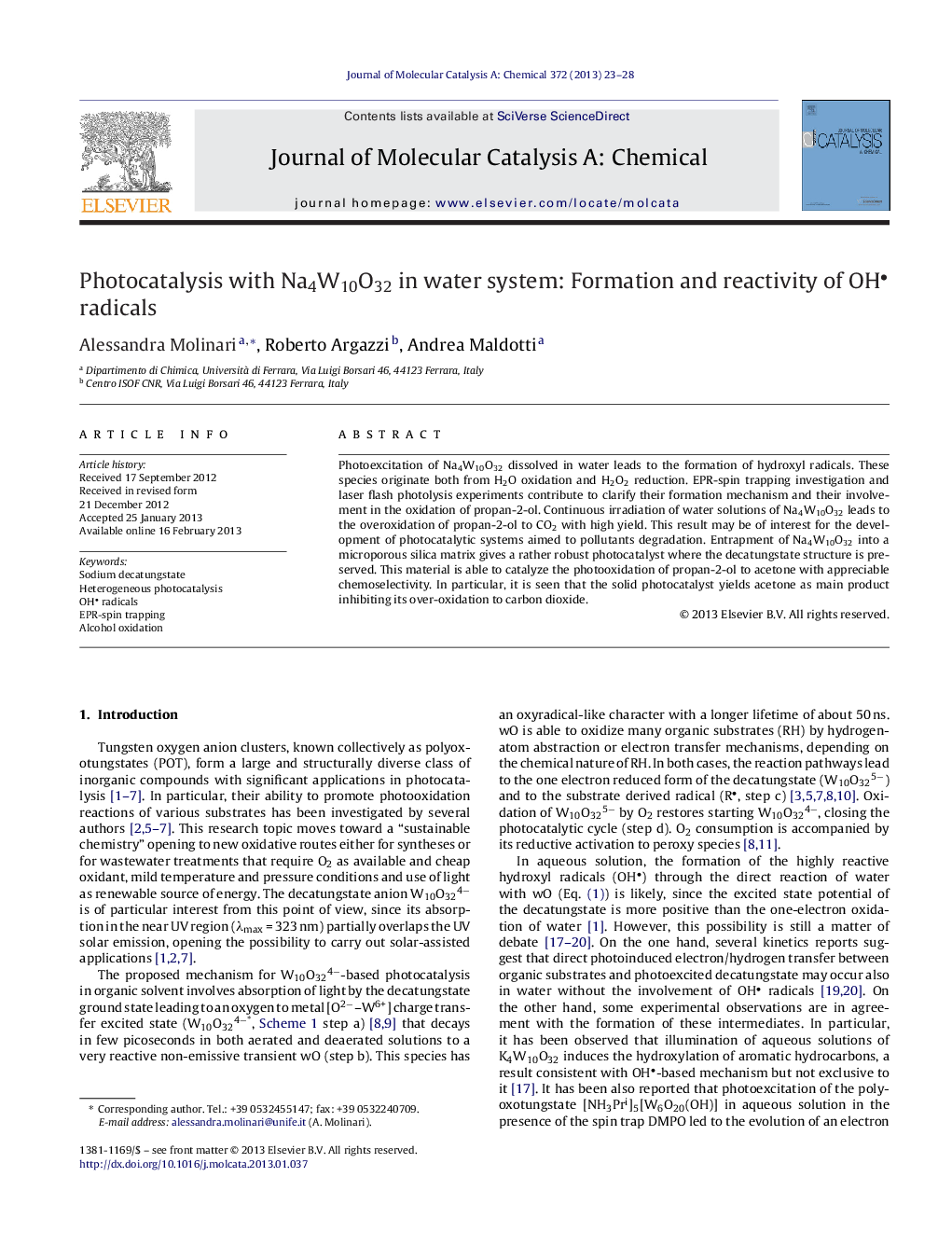| Article ID | Journal | Published Year | Pages | File Type |
|---|---|---|---|---|
| 65809 | Journal of Molecular Catalysis A: Chemical | 2013 | 6 Pages |
Photoexcitation of Na4W10O32 dissolved in water leads to the formation of hydroxyl radicals. These species originate both from H2O oxidation and H2O2 reduction. EPR-spin trapping investigation and laser flash photolysis experiments contribute to clarify their formation mechanism and their involvement in the oxidation of propan-2-ol. Continuous irradiation of water solutions of Na4W10O32 leads to the overoxidation of propan-2-ol to CO2 with high yield. This result may be of interest for the development of photocatalytic systems aimed to pollutants degradation. Entrapment of Na4W10O32 into a microporous silica matrix gives a rather robust photocatalyst where the decatungstate structure is preserved. This material is able to catalyze the photooxidation of propan-2-ol to acetone with appreciable chemoselectivity. In particular, it is seen that the solid photocatalyst yields acetone as main product inhibiting its over-oxidation to carbon dioxide.
Graphical abstractFigure optionsDownload full-size imageDownload high-quality image (95 K)Download as PowerPoint slideHighlights► Na4W10O32-photoassisted formation of OH radicals in water has been proved. ► OH radicals originate both from H2O oxidation and H2O2 reduction. ► OH radicals are directly involved in the oxidation of propan-2-ol. ► Entrapment of Na4W10O32 in a proper microporous silica minimizes CO2 production.
